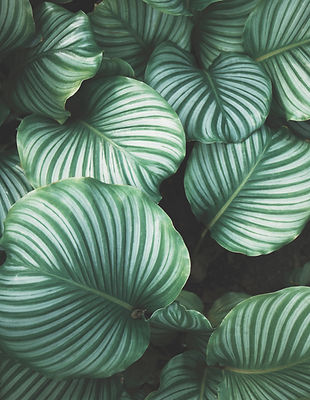- Adam Bowman
- Jul 4, 2024
- 4 min read
Updated: Jul 5, 2024
It feels as if mindfulness is everywhere these days. Or I should say the concept of mindfulness is everywhere, but not necessarily the practice. It has never been more visible in our culture but there also has never been a greater need. So how can we bridge this gap? Like solving any problem, the first step is to define the problem itself. This post will answer the following questions and will be the first in a series exploring how to live more mindfully—1) what is mindfulness & meditation?, 2) Why is it important?, and 3) How can we apply it?
What is Mindfulness & Meditation?
Mindfulness and meditation are two words that often go hand in hand, some would even use them interchangeably. I would argue that a key difference between the two is the scope in which they can be applied in everyday life. Mindfulness is more of a way of being, whereas meditation is more of a time limited practice. Throughout the rest of the article I will mostly be using the terms in tandem but first wanted to define each separately.
Mindfulness
Mindfulness is defined as, “a state of active, open attention to the present,” and that, “This state is described as observing one’s thoughts and feelings without judging them as good or bad (4).”

Meditation
Meditation can broadly be defined as, “exploring the present moment through exploring sensations, emotions, and thoughts (5).” This practice often includes elements of deep breathing, sitting still, closing one’s eyes, withholding judgment, and observing one’s thoughts and emotions.
Why is it Important?
So now that we know a little bit more about what mindfulness and meditation is, let’s talk about why it’s so relevant. With so many different reasons to choose from, I’ll discuss two trends here that highlight the need for mindfulness and meditation—increased rates of mental illness and the impact of our digital world.
Increased Rates of Mental Illness
Since the turn of the century we have continued to see the rates of Americans with mental illness increase (6). This trend was only exacerbated by the COVID-19 pandemic, with the number of Americans with mental illness being reported at 23% in 2021 (7). Young people (18-25) saw the sharpest increase during this time with over one third of this demographic reporting a mental illness in 2021 (7). With mindfulness and meditation consistently having been shown to improve mental health outcomes (more posts to come) (5), the need for application of these practices is clear.
Impact of our Digital World
We live in an age of disconnection and distraction. Everywhere you look there is some form of digital media vying for our attention: streaming services, movies, social media, video games, influencers, podcasts, and audiobooks. It is like we are trying to take a sip of water from a firehose. It is simply just too much for us to process at one time. As a result, we are becoming more and more disconnected from our daily lives.The main culprit of this disconnection? The smartphone.
A 2023 study indicates that Americans pick up their phone a whopping 144 times a day (2) and is often the first thing we reach for in the morning. The average screen time for an adult in the US, the majority of which come from our phones, is 7 hours and 3 minutes (1). If these statistics aren’t sobering for you yet, here’s the real bombshell—you now have an attention span that is shorter than a goldfish (3). Yes, you read that correctly. A recent study showed that the average human attention span has dropped to around 8 seconds, whereas the goldfish’s is around 9 seconds. Researchers have widely attributed this steady decline of our attention spans to the continual increase in our digital consumption.
So now that we’ve defined the problem, what can we do about it? I’m happy to say that it isn’t all doom and gloom. We can do something about this, and learning how to practice mindfulness & meditation is going to be key piece to the puzzle.
How Can We Use It?
There are many different potential applications for mindfulness & meditation in our everyday lives, too many to list all in one place. This is why this post will be the first in a series discussing mindfulness & meditation and how we can apply these practices to our lives. But to whet your appetite until our next post, I will leave you with a small but useful mindfulness practice. All you have to do is S.T.O.P—Stop, take, observe, and proceed (8). This is a simple acronym to remember the next time you find yourself stressed out or feeling disconnected from your day.

Stop- take a break from what you are doing, press pause on whatever task you are working on.
Take- a few deep breaths. Focus on where your breath is coming from. Try breathing from your belly, rather than your chest. Let your mind rest and shoulders relax.
Observe- be curious about how you are feeling in that moment. Note any thoughts, feelings, or physical sensations. Just by taking a second to quietly notice ourselves, we often establish a greater sense of control.
Proceed- take a step towards what you need in that moment. Maybe talk to a friend, grab a cup of coffee, or go for a five-minute walk. Really, it’s about what you would find helpful in that moment in order to move into the rest of your day confidently.
I hope that this article will serve as a nice introduction to mindfulness & meditation! If you are hungry for more, make to stay tuned for our next post in the upcoming weeks. You can always check the blog through our website and our social media accounts—icons at the bottom of the page! Hope you all have a wonderful day!
Written by: Adam Bowman
References
7. https://usafacts.org/articles/who-experiences-anxiety-and-depression-in-the- us/#:~:text=In%20the%20most%20recent%20round,the%20lowest%20percentage%20at%2018.8%25.







